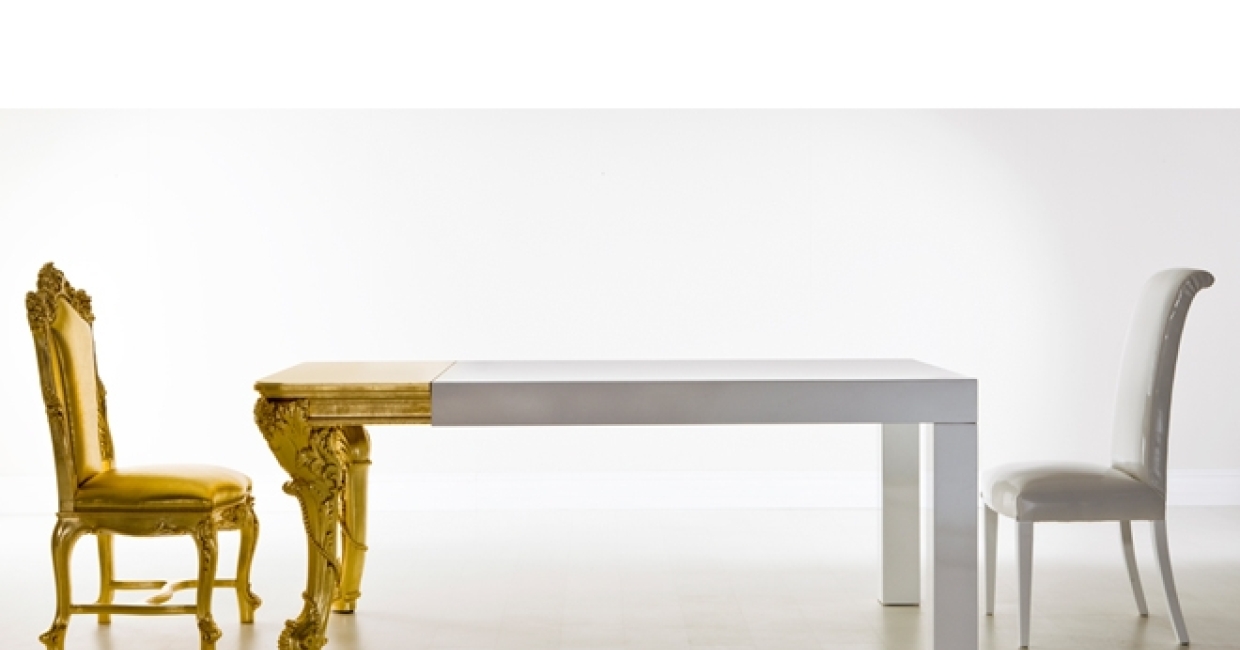Consumers feeling the pinch have to treat themselves from time to time – and, accordingly, a little luxury, informed by historical and exotic styles, is finding its way into furniture. Trend forecaster Victoria Redshaw introduces New Opulence …
As the financial crisis continues, it is easy to assume that trends with a focus on luxury, glamour or craftsmanship will not resonate with consumers – but these are increasingly relevant and desired design qualities, by virtue of the fact that continued austerity feels unendurable. This drives many people to seek out little luxuries and indulge in a slice of the good life, to counterbalance the cutbacks being made in many other areas of their lives.
This yearning can be satisfied by adopting elements of historical styles that look and feel special, helping to make everyday experiences more enjoyable. Consumers are looking for ways in which to make their home life and environment more pleasing, as well as their interactions with products more interesting and meaningful, as they attempt to escape into a slightly romanticised lifestyle.
The already-established trend of looking to the past for style inspiration is reinforced during the autumn/winter 2013/14 season as consumers show a growing interest in bygone times, and the trend towards nostalgia is strengthened as the dissatisfaction with current socio-economic issues increases.
The desire to collect, preserve and re-use items from the past becomes more widespread, as the notion of owning something rare, unique, curious or with a story to tell becomes even more valued and boast-worthy than the price tag or brand.
Of course, this is also an effective route to addressing issues of sustainability during a period when consumer fascination with constant newness has become financially unsustainable and has significantly waned. However, this attraction to vintage and antique items does lead to an enthusiastic acceptance of new products that tastefully and intelligently draw inspiration from and pay homage to styles of the past, as well as retail environments with antiques emporium-style merchandising – akin to the “considered design” Australian retailer Becker Minty have perfected in their Sydney store.
The look
This trend’s expansive array of inspiration is a way to give greater breadth to many of the design qualities introduced in previous forecasts – for example, Far Eastern flourishes very much endure – but overall the look is much more eclectic, as we globe-trot and time travel across the centuries in search of bijou treasures and artisanal techniques, brought together in a salon style.
An assemblage of ancient, antique, and vintage styles sit alongside lavish and daring contemporary pieces. Unabashed opulence oozes from every corner of room schemes, and there is no attempt to create stylistic or historical continuity – Baroque decadence, Arts & Crafts, art nouveau, art deco, Eastern ornateness and Gothic romanticism (which is reinforced by the film industry’s continued fascination with dark retellings of classic fairy tales and fables across 2013 and 2014) all create a crescendo of style.
And all of these styles are harmonised via the colour palette, which paints a composition full of theatrical extremes – sinister black, seductive absinthe and emerald greens, heady wine tones, studious and bitter browns, pearl, sombre stucco and carrara marble greys are accompanied by noble gold, bronze, steel and a teasing iridescent teal-to-purple metallic.
As Pre-Raphaelite influences and dandy styling come to the fore in fashion – reinforced by the release of Emma Thompson’s Effie film, starring Dakota Fanning, towards the end of this year – interiors also take on a sumptuous decorative style and furniture is at the centre of the drama.
• Velvet upholstery is rarely plain – crushed, devore, elaborately overprinted, embroidered, overlaid with laser-cut leather, densely encrusted with pearls in neat geometric layouts, or adorned with bands of oversized gemstones.
• Cabinets, sideboards, armoires and bed headboards showcase decorative tapestry panels.
• Footstools, pouffes, stools and dressing table chairs are dressed in decorative skirts made from beaded silken tassel fringing or strings of faux pearls.
• Mother-of-pearl mosaic work, in both natural and dyed colours, provide pleasing iridescent effects on simple, bold furniture shapes, and rich coloured metallic surface finishes have a foiled or changeant appearance.
• The gilded wooden scrollwork of classic Baroque and Rococo furniture shapes is disrupted by contemporary additions or missing sections boldly cut out from the main piece.
• Exciting new furniture assemblages are created by marrying together disparate fragments of several old furniture pieces.
• Experiment by stripping back sections of seating pieces down to the wooden frame – undressing them of their upholstered finery to reveal the core structure (like the Soft and Creamy chair by Gonçalo Campos).
• Redress seating pieces with intricately-ruffled structures, flat folded pleats and concertina constructions – making reference to the ruffs and cuffs of 17th century costumes.
• Hard furniture surfaces have faux quilted and studwork textures, whilst leather upholstery appears lightly crumpled or printed with metallic damasks
Welcome to New Opulence … permission to be eccentric is granted!
Victoria Redshaw is the MD at trend forecasting agency Scarlet Opus. To sign up for regular trend updates on the agency’s blog or find out more about its trend forecasting services visit www.scarletopus.com, or email [email protected] to discover more about future furniture design trends.










